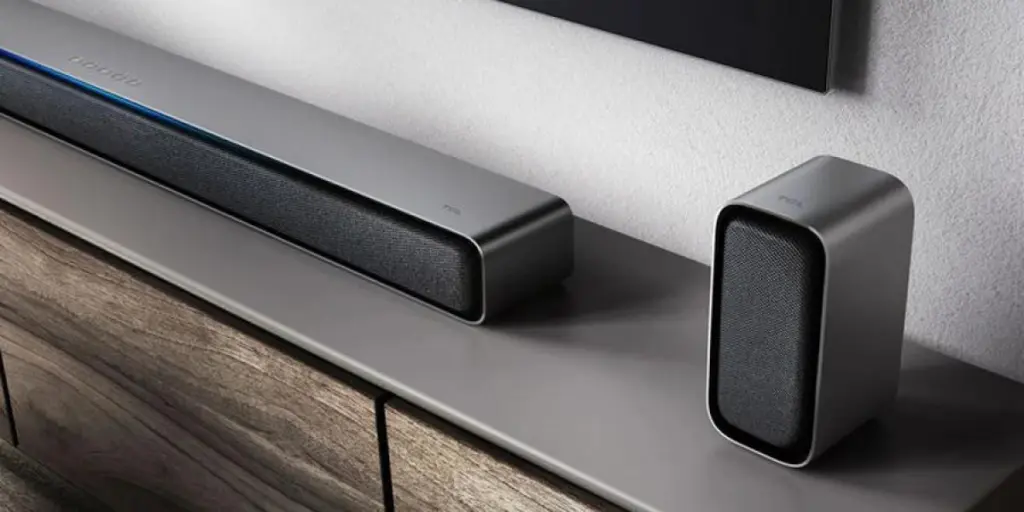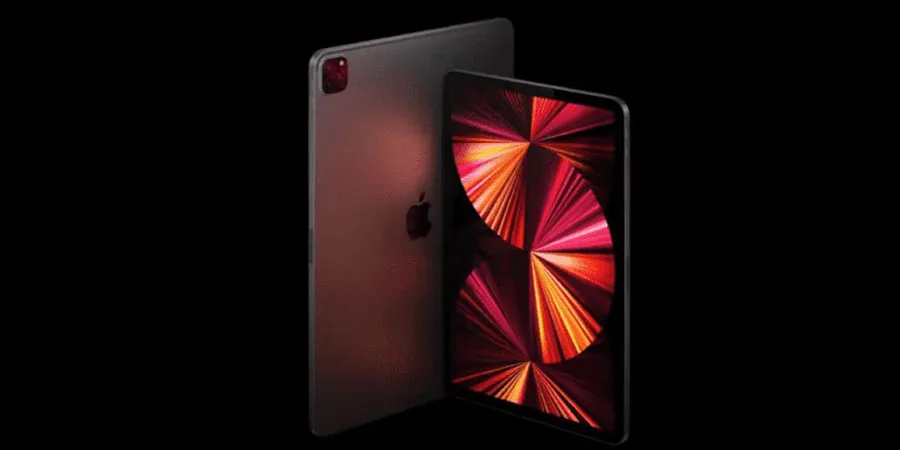In 2024, the realm of home audio systems is witnessing a transformative shift, with sound bars emerging as pivotal elements in enriching TV audio experiences. This surge in popularity is fueled by significant technological advancements, making sound bars not just accessories, but essential components for immersive audio. As TVs slim down, sacrificing speaker quality, sound bars step in to fill the auditory void, offering a crisp, powerful sound that built-in TV speakers simply cannot match. The latest models integrate cutting-edge features like wireless connectivity, voice control, and room-filling surround sound, bringing the cinema experience into the living room. This article delves into these innovative sound bars, guiding consumers through the complexities of selection and showcasing the top models of 2024.
Table of Contents:
1. Market overview
2. Key considerations for selecting sound bars
3. Best sound bars of 2024: Models and features
1. Market overview

The sound bar market in 2024 presents a vibrant and expanding landscape, reflecting the growing consumer demand for high-quality home audio solutions. According to Expert Market Research, the global sound bar market reached approximately USD 5.99 billion in 2023 and is projected to grow at a CAGR of 4.80% between 2024 and 2032, aiming to reach a value of USD 9.14 billion by 2032. This steady growth is driven by a rising preference for wireless streaming and the integration of advanced technologies like voice assistants and AI.
Key players in the market include Bose Corporation, Samsung Electronics Co. Ltd, Yamaha Corporation, Sennheiser Electronics GmbH & Co. KG, Sony Electronics Inc., and others. These brands are focusing on developing user-friendly media bars with modern features to enhance the user experience. The demand is further fueled by the digitalization trend and the rising popularity of subscription-based streaming platforms like Netflix and Amazon Prime, which have significantly contributed to the demand for sound bar systems.
Regionally, the Asia Pacific market is expected to witness rapid growth due to the adoption of advanced electronic devices and the strong presence of key market players. The increasing construction of smart homes and rising disposable incomes in this region are also contributing factors.
In terms of product types, active sound bars are anticipated to see faster growth due to their built-in amplifiers and surround sound capabilities, offering a cost-effective and convenient solution for creating a digital surround sound effect. Meanwhile, passive sound bars, known for their higher quality, remain a more expensive option due to their need for external amplifiers or receivers.

The market’s evolution is characterized by innovations in connectivity, with Wi-Fi and Bluetooth-enabled sound bars enhancing the overall user experience. The flexibility and ease of installation provided by these wireless options are key factors driving their popularity. This trend is aligned with the global shift towards smart and interconnected home entertainment systems, where sound bars play a crucial role in delivering an immersive audio experience.
2. Key considerations for selecting sound bars
When selecting sound bars, several crucial factors come into play, shaping the overall audio experience and user satisfaction. Balancing these factors helps in choosing a sound bar that not only enhances the audio experience but also fits seamlessly into the user’s lifestyle and home entertainment system.
Audio quality: The core of a sound bar’s appeal lies in its audio quality. Clarity, bass response, and sound balance are paramount. A sound bar must deliver crisp and clear audio, ensuring dialogues are easily intelligible and high notes are well-defined. The bass should be robust without overpowering the mid and high frequencies, creating a balanced soundstage. Websites like PCMag and Wired highlight the importance of multi-channel sound bars, which can simulate surround sound for a more immersive experience. The presence of a dedicated subwoofer is also noted for enhancing the depth and richness of the sound.
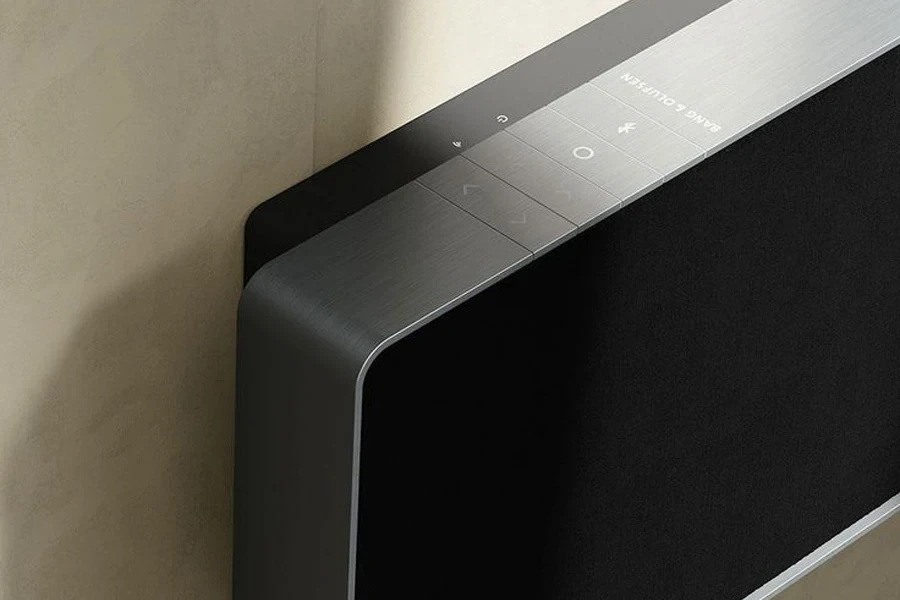
Connectivity options: Modern sound bars offer a variety of connectivity options, including Bluetooth, Wi-Fi, and HDMI. Bluetooth connectivity allows for easy streaming from mobile devices, making the sound bar a versatile audio solution for various media. Wi-Fi-enabled sound bars can connect to home networks for streaming online content, providing access to a wider range of audio sources. HDMI connectivity, especially with support for Audio Return Channel (ARC), simplifies the connection to TVs and ensures high-quality audio transmission.
Size and aesthetics: The physical dimensions and design of a sound bar play a significant role in consumer choice. As per World Wide Stereo, the size of the sound bar should ideally match or be smaller than the width of the TV for an aesthetically pleasing setup. The design of the sound bar, whether sleek and minimalistic or bold and prominent, can complement or contrast the room’s décor, influencing consumer preference.
Price vs. Performance: Balancing cost and quality is crucial. While high-end sound bars offer superior audio quality and features, they come at a premium. Budget-friendly options might not match the performance of their pricier counterparts but can still significantly improve upon TV speakers. Consumers need to evaluate their specific needs and budget constraints to find the right balance between price and performance.
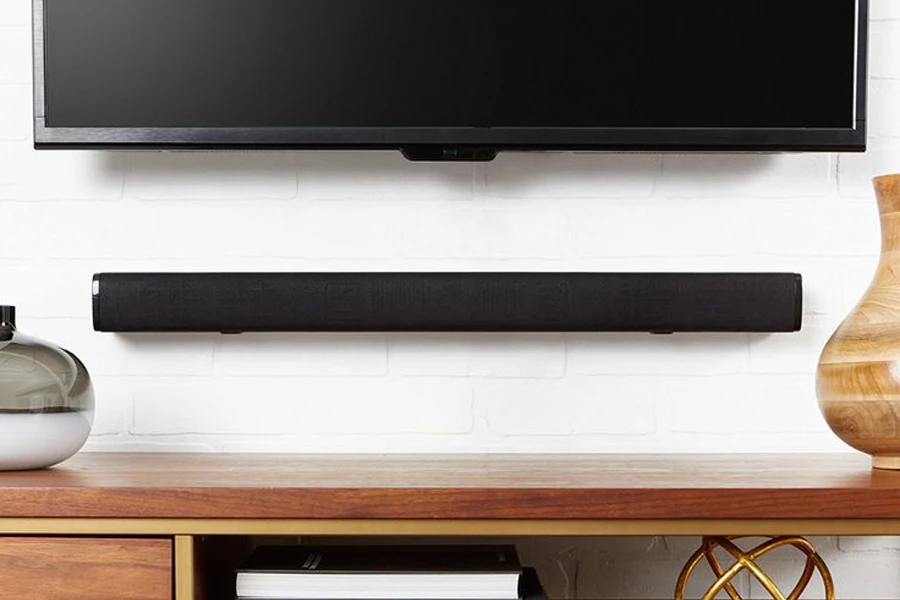
Additional features: Features like voice assistant compatibility and multi-room audio are increasingly popular. Sound bars compatible with Alexa, Google Assistant, or Siri add convenience and smart home integration. Multi-room audio capability, allowing sound bars to connect with other speakers in different rooms, creates a seamless audio experience throughout the home.
3. Best sound bars of 2024: Models and features
The sound bar market in 2024 boasts a range of models that cater to diverse preferences and needs. Here, we explore some of the top models and brands, analyzing their features, performance, and overall value.
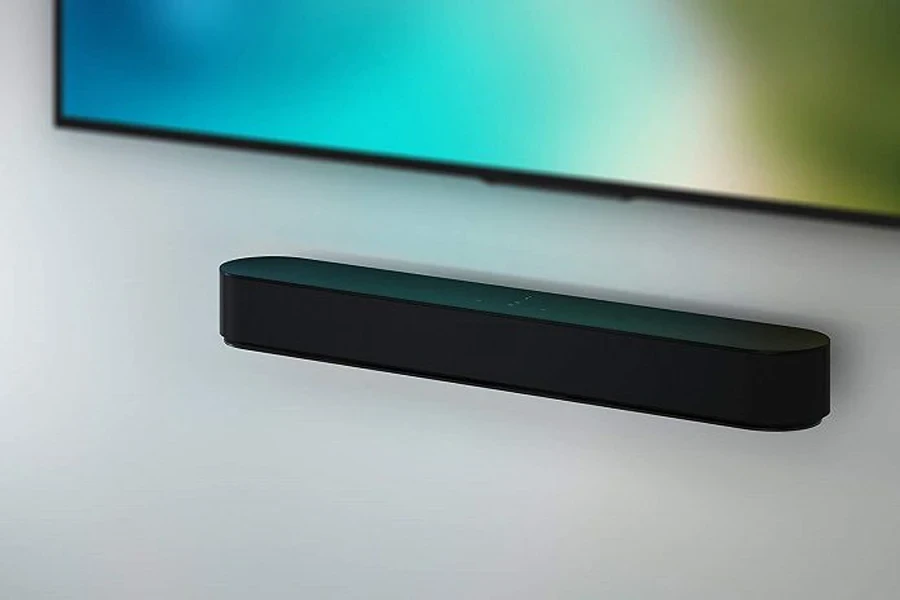
Top Models:
SENNHEISER AMBEO: Known for its immersive 3D sound experience, the SENNHEISER AMBEO stands out with its 13 speakers, including upward-firing drivers for Dolby Atmos and DTS:X support. Its advanced room calibration technology tailors the sound to the specific room environment, ensuring optimal audio performance.
Bose Smart Soundbar 900: This model features Dolby Atmos with two upward-firing speakers, creating a spacious soundstage. It integrates seamlessly with voice assistants and offers Bose’s proprietary ADAPTiQ audio calibration for customized sound.
JBL Bar 5.1: A versatile sound bar that transforms from a soundbar into a true wireless 5.1 home theater system. Its detachable battery-powered rear speakers offer flexibility and convenience.
Klipsch Cinema 600: This 3.1 sound bar system is known for its easy plug-and-play setup and a dedicated center channel that ensures clear dialogue. It offers deep bass with its wireless subwoofer, enhancing the cinematic experience.
Samsung HW-Q900A: This model boasts a 7.1.2 channel system with Q-Symphony technology, which synchronizes audio with compatible Samsung QLED TVs. It includes built-in Alexa and offers room-filling sound with its wide range of speakers.

Brand Analysis:
SENNHEISER: A brand synonymous with high-fidelity sound, SENNHEISER’s AMBEO technology showcases its prowess in creating immersive audio experiences.
Bose: Known for its sleek designs and innovative audio technology, Bose continues to push the boundaries with features like ADAPTiQ and voice assistant integration.
JBL: JBL’s strength lies in its ability to blend high-quality audio with user-friendly features, as seen in the JBL Bar 5.1’s wireless capabilities.
Klipsch: Klipsch excels in delivering dynamic, lifelike sound with a focus on clear vocals, as exemplified by the Cinema 600 model.
Samsung: Samsung combines innovative audio technologies like Q-Symphony with smart features, making its sound bars a top choice for home theater enthusiasts.
Comparative overview:
The SENNHEISER AMBEO, with its advanced 3D audio capabilities, is ideal for audiophiles seeking a cinema-like experience. In contrast, the Bose Smart Soundbar 900 offers a blend of sophisticated design and smart features, suitable for users who value aesthetics and seamless integration with smart home systems. The JBL Bar 5.1’s flexibility makes it a great option for those who want a customizable home theater setup. Klipsch Cinema 600 is perfect for users looking for straightforward operation without compromising sound quality. Samsung’s HW-Q900A appeals to users who desire a high-tech, feature-rich sound bar that complements their Samsung TV ecosystem.
Conclusion
As we’ve explored, the sound bar market in 2024 offers an array of choices, each tailored to enhance the audio experience in unique ways. As you navigate this diverse market, remember that the right sound bar can transform your viewing experience, bringing cinema-quality sound into your living room. Whether you prioritize immersive sound, smart features, or aesthetic harmony with your space, there is a sound bar out there that fits the bill. We encourage you to weigh these factors carefully, aligning your choice with your specific audio needs and lifestyle, to truly elevate your home entertainment system.
